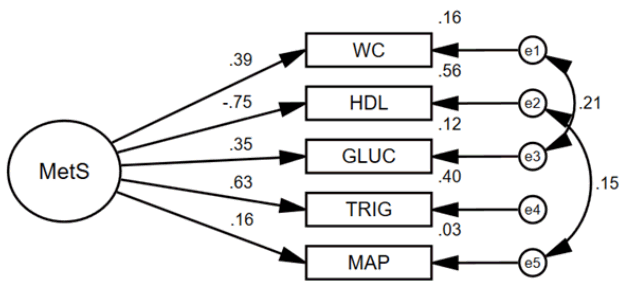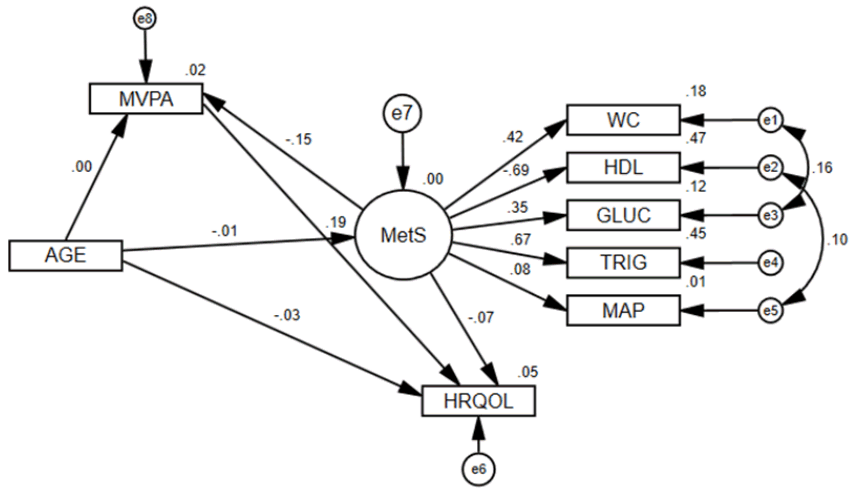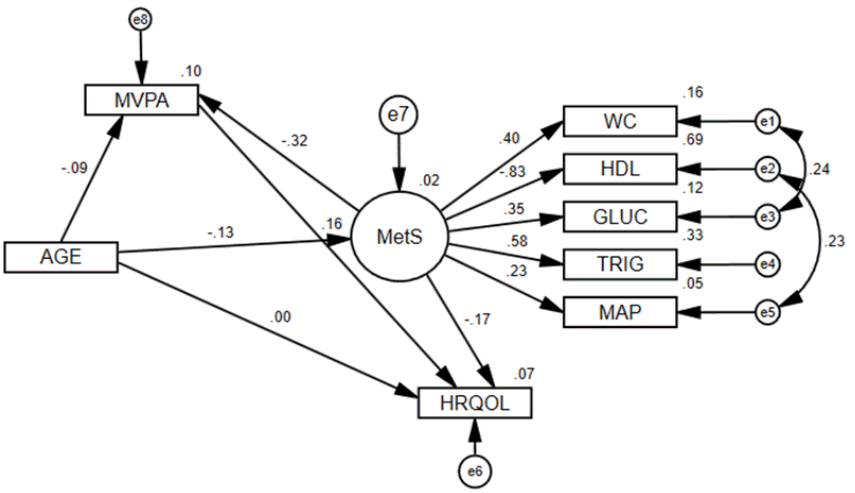1. Alberti MM, Eckel RH, Grundy SM, et al. Harmonizing the Metabolic Syndrome: A Joint Interim Statement of the Association for the Study of Obesity Heart Federation; International Atherosclerosis Society; and International National Heart, Lung, and Blood Institute; American Heart Association; World International Diabetes Federation Task Force on Epidemiology and Prevention. Circulation 2009; 120:1640–1645.


2. Expert Panel on Detection E. Executive summary of the Third Report of the National Cholesterol Education Program (NCEP) expert panel on detection, evaluation, and treatment of high blood cholesterol in adults (Adult Treatment Panel III). JAMA 2001; 285(19):2486


3. Hadaegh F, Mohebi R, Cheraghi L, et al. Do different metabolic syndrome definitions predict cerebrovascular events and coronary heart disease independent of their components?: 9 years follow-up of the tehran lipid and glucose study. Stroke 2012; 43(6):1669–1671.


4. Wang J, Sarnola K, Ruotsalainen S, et al. The metabolic syndrome predicts incident congestive heart failure: a 20-year follow-up study of elderly Finns. Atherosclerosis 2010; 210(1):237–242.


6. Sarrafzadegan N, Gharipour M, Sadeghi M, et al. Metabolic syndrome and the risk of ischemic stroke. J Stroke Cerebrovasc Dis 2017; 26(2):286–294.


11. Hui ZH, Chen YA, Chen DO, et al. Predictive power for type 2 diabetes mellitus using dynamic change of metabolic syndrome, dynamic change of fasting plasma glucose, metabolic syndrome and fasting plasma glucose. Iran J Public Health 2014; 43(4):432–440.


15. Hart PD, Kang M, Weatherby NL, Lee YS, Brinthaupt TM. Systematic review of health-related quality of life assessments in physical activity research. World J Prev Med 2015; 3:28–39.
16. Hart PD, Kang M. Reliability of the Short-form health survey (SF-36) in physical activity research using meta-analysis. World J Prev Med 2015; 3(2):17–23.
20. Deihim T, Amiri P, Hatami H, Cheraghi L, Azizi F. Association between metabolic syndrome and health-related quality of life among individuals with normal and impaired glucose regulation: Findings from Tehran Lipid and Glucose Study. Arch Iran Med 2016; 19(8):577–583.

22. Okosun IS, Annor F, Esuneh F, Okoegwale EE. Metabolic syndrome and impaired health-related quality of life and in non-Hispanic White, non-Hispanic Blacks and Mexican-American Adults. Diabetes Metab Syndr 2013; 7(3):154–160.


27. Hart PD. Muscle strengthening activity in addition to physical activity and health-related quality of life in adults. World J Prev Med 2015; 3(2):24–27.
28. Schumacker RE, Lomax RG. A beginner’s guide to structural equation modeling. Psychology Press 2016. pp 73
29. Hooper D, Coughlan J, Mullen M. Structural equation modelling: Guidelines for determining model fit. Electronic Journal of Business Research Methods 2008; 6(1):53–60.
30. Sobel ME. Asymptotic confidence intervals for indirect effects in structural equation models. Sociological Methodology 1982; 13:290–312.

31. Bollen KA, Stine R. Direct and indirect effects: Classical and bootstrap estimates of variability. Sociological Methodology 1990; 20:115–140.

32. Byrne Barbara M. Structural Equation Modeling with Amos: Basic Concepts, Applications, and Programming. New York: Routledge 2016. pp 227
33. Blunch N. Introduction to structural equation modeling using IBM SPSS statistics and AMOS. Sage 2012. pp 130
34. Cody RP, Smith JK. Applied statistics and the SAS programming language. North-Holland: 2005. pp 24
35. Geelen CC, Kindermans HP, Bergh JP, Verbunt JA. Perceived physical activity decline as a mediator in the relationship between pain catastrophizing, disability, and quality of life in patients with painful diabetic neuropathy. Pain Pract 2017; 17(3):320–328.


37. Menezes D, Laranjo L, Marmeleira J. Criterion-related validity of the short form of the international physical activity questionnaire in adults who are Deaf. Disabil Health J 2017; 10(1):33–38.


39. Boon RM, Hamlin MJ, Steel GD, Ross JJ. Validation of the New Zealand physical activity questionnaire (NZPAQLF) and the international physical activity questionnaire (IPAQ-LF) with accelerometry. Br J Sports Med 2010; 44(10):741–746.


40. Arvidsson D, Leijon M, Sundquist J, Sundquist K, Lindblad U, Bennet L. Cross-cultural validation of a simple self-report instrument of physical activity in immigrants from the Middle East and native Swedes. Scand J Public Health 2014; 42(3):255–262.















